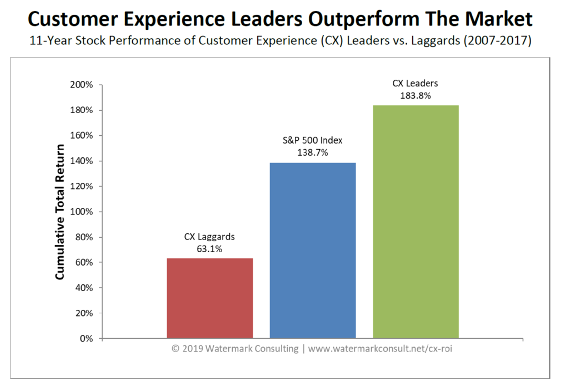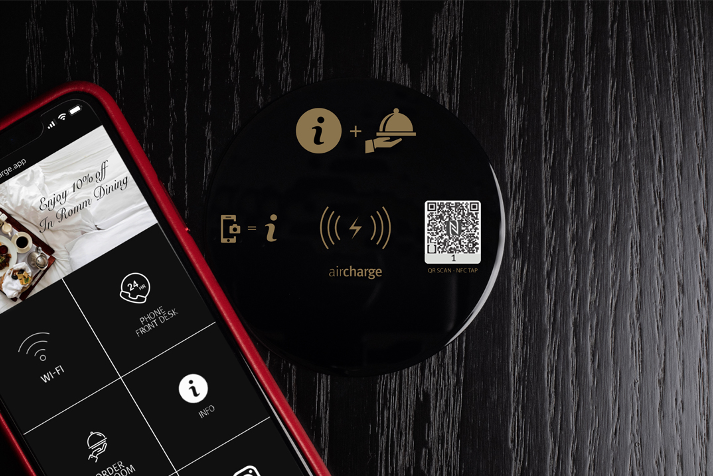Customer experience is redefining the rules of business practices, but are business leaders listening?

What is customer experience? Customer experience is the internal and subjective response a person has with any direct or indirect contact with a company. Direct is when the experience has been initiated by the customer, by them purchasing a product or service. However, indirect contact tends to involve unexpected encounters where a product or service comes in the form of word-of-mouth recommendations or criticism, advertising, social media, reviews, and so on. It may be as simple as a friend buying you your first cup of coffee from Starbucks, the name on the cup is a positive indirect customer experience.
It is already well-known that customer retention is cheaper than customer acquisition, up to five times cheaper. So, the first rule of any hotel should be to retain customers and build a loyal relationship with them, avoiding the costs tied with customer acquisition. But how is it possible to keep guests? By providing customers a differentiating guest experience that makes them remember your business. Businesses must be agile and flexible, solving customer’s demands in real-time and offering innovative and forward-thinking solutions that help the customer journey. Although it may not be an easy one, once cracked it is a recipe for battling against commoditisation, securing sustainable competitive advantage, and achieving market dominance.
Why the Neglect?
 Business leaders and executives do not actively deny the significance of customer experience but may be seen as paying lip service to the concept publicly. But long waiting times and under staffed stores suggest that they are skeptical of its value, possibly down to executives greater focus on the tangible rather than the intangibles. They are searching for quantifiable business cases for customer experience. Customer experience is just less visible compared to tangible cost-saving activities such as renegotiating a tenancy agreement. When developing a long-term strategy for customer retention, it is important to understand the true benefits from a cost perspective alongside the “soft” benefits of creating happier customers. What better way to help business leaders understand the overarching influence of guest experience than translating it to layman’s terms. Focusing on the macro impact of well thought out guest experience strategy, which is the objective behind Watermark Consultings’ “guest experience ROI study”. The Study compares guest experience to shareholder value.
Business leaders and executives do not actively deny the significance of customer experience but may be seen as paying lip service to the concept publicly. But long waiting times and under staffed stores suggest that they are skeptical of its value, possibly down to executives greater focus on the tangible rather than the intangibles. They are searching for quantifiable business cases for customer experience. Customer experience is just less visible compared to tangible cost-saving activities such as renegotiating a tenancy agreement. When developing a long-term strategy for customer retention, it is important to understand the true benefits from a cost perspective alongside the “soft” benefits of creating happier customers. What better way to help business leaders understand the overarching influence of guest experience than translating it to layman’s terms. Focusing on the macro impact of well thought out guest experience strategy, which is the objective behind Watermark Consultings’ “guest experience ROI study”. The Study compares guest experience to shareholder value. 
Watermark Consulting Guest experience ROI Study WATERMARK CONSULTING
The results show that customer experience leaders outperformed the broader market and the customer experience laggards trailed behind. The leaders generating a total cumulative return that is nearly three times the laggards.
Now more than ever…
It’s no surprise that advancements in technology and a trend towards instant gratification has resulted in higher expectation for customer experience. Particularly apparent amongst millennials and generation Z.
In a recent Adobe report, 1,500 U.S. adults were surveyed regarding preferences and expectations for digital experiences in retail, travel & hospitality, media & entertainment, and the financial services industries. The report found that expectations coming from the millennial age group are higher than ever. Director of Adobe Digital Insights, Taylor Schreiner states “You can see this expectation that technology will provide great experiences in some of their survey responses. For instance, about half of people under 35 would rather engage with a computer than a human when interacting with a brand. Older groups want to talk to real people and expect interactions with people to give them better experiences.”
Customers expect instant communication when interacting with brands, which could be in the form of a mobile text message, email notification right to their inbox after check-in. Many hotel brands have developed apps so that they can communicate with the customer as much as possible. Apps that communicate with the guest throughout their stay, by offering offers and more. Technology and the generation known as “Gen Tech” may be the reason for heightened expectations when considering customer experience, but technology is an excellent and cost-effective solution for improving guest experience.
How technology is improving customer experience
If a brand over-delivers on the customer experience, enthusiastic guests become less price-sensitive, spend more, become more loyal, and leave a positive review. As outlined within this article, customer experience has become a decisive factor for customer retention and growth. There are many ways that the hotel experience can be improved through technology, but the one we are most familiar with is wireless charging and contactless services.
As today’s consumers rely so heavily on their devices, from checking in to travel as well as mobile payments to accessing initiatives and staying connected to the brand. Wireless charging is one way to improve the guest experience within the hotel, as guests feel valued and will no longer have to carry around tangled cables. Similar to the early days of Wi-Fi where it increased footfall as it was seen as a key reason for visiting preferred locations. Wireless charging is much the same. Besides relieving many guests “battery anxiety”, it can also provide usage data and diagnostics, equipping hotel owners with point of consumption information that has been previously unavailable. It can uncover the hotels busiest time of day, most popular seating area, and via customer opt-in, whether they are returning guests or new guests.
Another great contributor that is seen to be game-changing on the guest experience front is contactless digital services. These digital services have unlocked a door for many players within the hospitality industry. It has allowed brands to be more tentative to the customer without relying on costly staff hiring costs. People visiting the hotel can access the digital menus and order directly to room, as well as viewing and redeeming any offers that might be available, access to the hotels WiFi, and other available locations. It is also possible to include a direct call to action to encourage the customer to leave feedback, which answers a lot of the questions posed within this article and produces another medium for hotel brands to communicate with their guests and generate valuable feedback.
